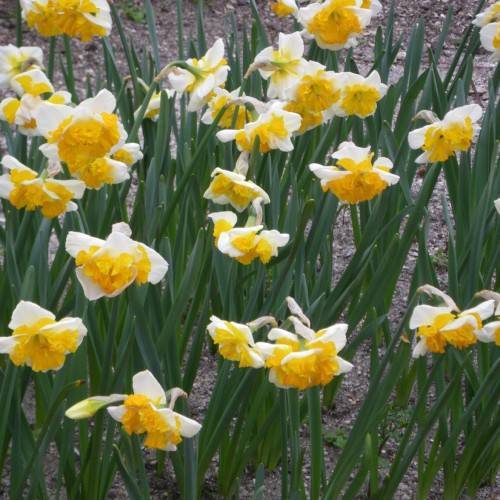
split-corona daffodil
Narcissus 'Love Call'
Cycle:
Perennial
Watering:
Average
Hardiness Zone:
4 - 8
Flowers:
Flowers In Spring
Sun:
Full sun,part shade
Leaf:
Yes
Growth Rate:
High
Maintenance:
Low
Care Level:
Medium
watering
The Split-corona Daffodil (Narcissus 'Love Call') needs to be watered somewhat regularly, but should not be overwatered. It should be checked about 2 times per week during the first 8 weeks after planting, and then once a week afterwards. During warm and dry weather, the soil should be checked every 4 to 5 days for moisture. If the soil is still moist from the previous watering, then it does not need to be watered again. It should be watered until it is soaked through, and the excess water should be allowed to completely drain away. The soil should not be allowed to become soggy. In the winter months, the Split-corona Daffodil should be watered less frequently, as they are dormant during most of this time.
sunlight
Split-corona daffodils (Narcissus 'Love Call') require full sun during the day for at least 6-8 hours to thrive. While the plant can survive in partial shade, it will not flower heavily unless kept in an area that receives full sun. During the hottest part of the day, it is important to provide the daffodil with some protection from the midday sun; a light screening with shade cloth, strategically placed trees, or other means of creating some shade can help to prevent the plant from getting too hot. Additionally, exposure during the afternoon that is too much or too direct can cause the flowers to become bleached.
pruning
Split-corona daffodils (Narcissus 'Love Call') should be pruned immediately after they finish blooming. Because these plants are cold-hardy perennials, it is important to prune them in the late spring or early summer. This helps to reduce their size while also promoting flower bud development for the next season. The dead flower heads should be removed first, ensuring that no seed is left behind. After removing the flower heads, the spent foliage should then be trimmed back, usually to within 2-3 inches of the ground. This helps to help reduce the size of the plant, while also allowing new growth to come through in the following season. Additionally, dividing the clumps of the plant every 3-5 years can help to promote the growth of more flowers.
